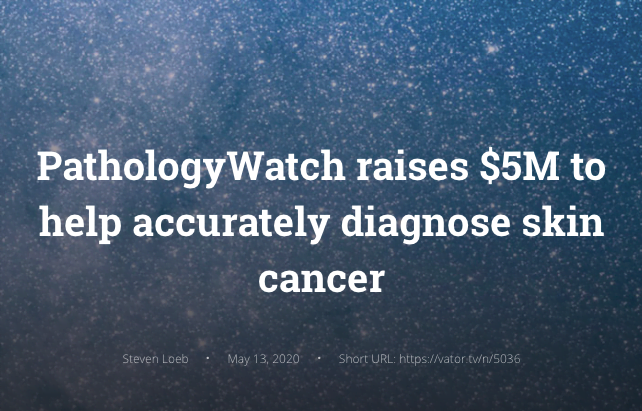PathologyWatch cofounder and CEO Dan Lambert was recently featured by Steven Loeb on VatorNews in a conversation about series A funding, digital pathology, and AI technology.
During the interview, Loeb asked Lambert about the services PathologyWatch provides dermatologists. “PathologyWatch provides a digital display so the dermatologist can actually view the case and discuss with the pathologist when needed,” explained Lambert. “We also integrate the reports directly into the dermatology electronic medical records systems.”
Researchers estimate 5 percent of US adult patients experience diagnostic errors every year. Studies show half of those errors are potentially harmful to the patient. With this new technology, dermatologists can review pathology quickly and begin what is often life-saving treatment faster.
Right now, around 20 dermatology offices are using PathologyWatch’s services. The most notable benefits of this service include better patient care from increased case visibility, as well as “a lot of time and errors saved in the office copying reports over,” said Lambert, adding that, in some cases, the company’s model can potentially result in more revenue to the practice.
“We don’t charge the dermatologist anything as we’re reimbursed by insurance for the cases that we read. Anecdotally, the turnaround time is faster, and more cases receive enhanced clinicopathological correlation by the dermatologist since they have immediate, 24/7 access to the diagnostic digital slides,” he explained.
PathologyWatch will use this funding to do more outreach to dermatology clinics around the country, while also expanding its sales force. The company—comprised of 10 full-time employees and a number of highly specialized contractors—will expand marketing efforts and implement a channel partner strategy while investing in the development of technology and supervised artificial intelligence for various cancer lines. The ultimate goal for PathologyWatch is to implement AI technology into these services to identify certain cancer lines.
“Our AI is being used internationally right now,” said Lambert. “It’s still in the early stages, but we’re seeing that AI can help physicians move faster through certain cases and draw attention to problematic areas where the pathologist should be spending more time. It’s clear that the technology will be used in tandem with humans.”
To read the full VatorNews article, click here. To learn more about digital pathology and AI technology at PathologyWatch, click here.

